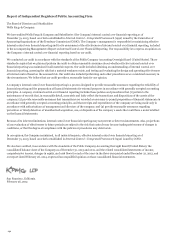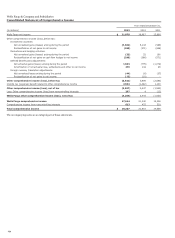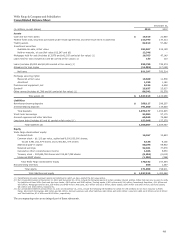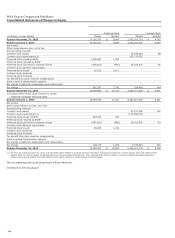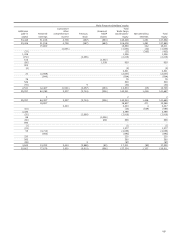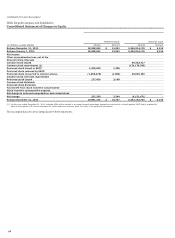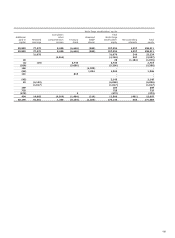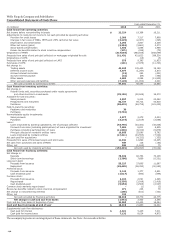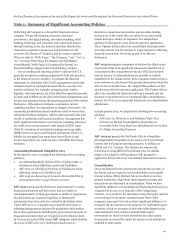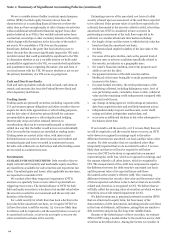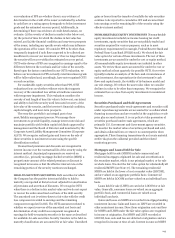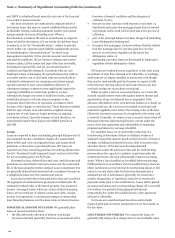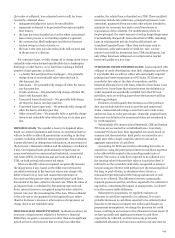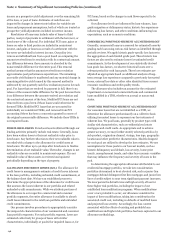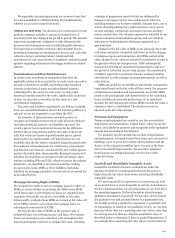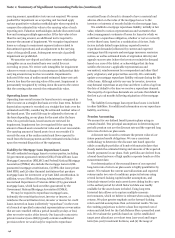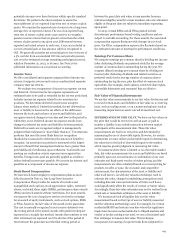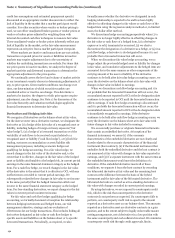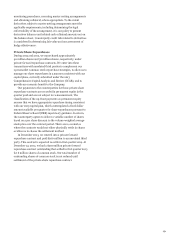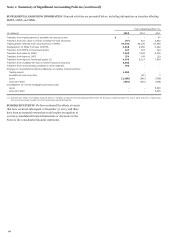Wells Fargo 2013 Annual Report Download - page 144
Download and view the complete annual report
Please find page 144 of the 2013 Wells Fargo annual report below. You can navigate through the pages in the report by either clicking on the pages listed below, or by using the keyword search tool below to find specific information within the annual report.Note 1: Summary of Significant Accounting Policies (continued)
We are a variable interest holder in certain special-purpose
entities (SPEs) in which equity investors do not have the
characteristics of a controlling financial interest or where the
entity does not have enough equity at risk to finance its activities
without additional subordinated financial support from other
parties (referred to as VIEs). Our variable interest arises from
contractual, ownership or other monetary interests in the entity,
which change with fluctuations in the fair value of the entity's
net assets. We consolidate a VIE if we are the primary
beneficiary, defined as the party that has both the power to
direct the activities that most significantly impact the VIE and a
variable interest that could potentially be significant to the VIE.
To determine whether or not a variable interest we hold could
potentially be significant to the VIE, we consider both qualitative
and quantitative factors regarding the nature, size and form of
our involvement with the VIE. We assess whether or not we are
the primary beneficiary of a VIE on an on-going basis.
Cash and Due From Banks
Cash and cash equivalents include cash on hand, cash items in
transit, and amounts due from the Federal Reserve Bank and
other depository institutions.
Trading Assets
Trading assets are primarily securities, including corporate debt,
U.S. government agency obligations and other securities that we
acquire for short-term appreciation or other trading purposes,
and the fair value of derivatives primarily held for customer
accommodation purposes or risk mitigation and hedging.
Interest-only strips and other retained interests in
securitizations that can be contractually prepaid or otherwise
settled in a way that the holder would not recover substantially
all of its recorded investment are classified as trading assets.
Trading assets are carried at fair value, with interest and
dividend income recorded in interest income and realized and
unrealized gains and losses recorded in noninterest income.
Periodic cash settlements on derivatives and other trading assets
are recorded in noninterest income.
Investments
AVAILABLE-FOR-SALE SECURITIES Debt securities that we
might not hold until maturity and marketable equity securities
are classified as available-for-sale securities and reported at fair
value. Unrealized gains and losses, after applicable income taxes,
are reported in cumulative OCI.
We conduct other-than-temporary impairment (OTTI)
analysis on a quarterly basis or more often if a potential loss-
triggering event occurs. The initial indicator of OTTI for both
debt and equity securities is a decline in fair market value below
the amount recorded for an investment and the severity and
duration of the decline.
For a debt security for which there has been a decline in the
fair value below amortized cost basis, we recognize OTTI if we
(1) have the intent to sell the security, (2) it is more likely than
not that we will be required to sell the security before recovery of
its amortized cost basis, or (3) we do not expect to recover the
entire amortized cost basis of the security.
Estimating recovery of the amortized cost basis of a debt
security is based upon an assessment of the cash flows expected
to be collected. If the present value of cash flows expected to be
collected, discounted at the security’s effective yield, is less than
amortized cost, OTTI is considered to have occurred. In
performing an assessment of the cash flows expected to be
collected, we consider all relevant information including:
x
x
x
x
x
x
x
x
x
the length of time and the extent to which the fair value has
been less than the amortized cost basis;
the historical and implied volatility of the fair value of the
security;
the cause of the price decline, such as the general level of
interest rates or adverse conditions specifically related to
the security, an industry or a geographic area;
the issuer's financial condition, near-term prospects and
ability to service the debt;
the payment structure of the debt security and the
likelihood of the issuer being able to make payments that
increase in the future;
for asset-backed securities, the credit performance of the
underlying collateral, including delinquency rates, level of
non-performing assets, cumulative losses to date, collateral
value and the remaining credit enhancement compared with
expected credit losses;
any change in rating agencies' credit ratings at evaluation
date from acquisition date and any likely imminent action;
independent analyst reports and forecasts, sector credit
ratings and other independent market data; and
recoveries or additional declines in fair value subsequent to
the balance sheet date.
If we intend to sell the security, or if it is more likely than not
we will be required to sell the security before recovery, an OTTI
write-down is recognized in earnings equal to the entire
difference between the amortized cost basis and fair value of the
security. For debt securities that are considered other-than-
temporarily impaired that we do not intend to sell or it is more
likely than not that we will not be required to sell before
recovery, the OTTI write-down is separated into an amount
representing the credit loss, which is recognized in earnings, and
the amount related to all other factors, which is recognized in
OCI. The measurement of the credit loss component is equal to
the difference between the debt security's amortized cost basis
and the present value of its expected future cash flows
discounted at the security's effective yield. The remaining
difference between the security’s fair value and the present value
of future expected cash flows is due to factors that are not credit-
related and, therefore, is recognized in OCI. We believe that we
will fully collect the carrying value of securities on which we have
recorded a non-credit-related impairment in OCI.
We hold investments in perpetual preferred securities (PPS)
that are structured in equity form, but have many of the
characteristics of debt instruments, including periodic cash flows
in the form of dividends, call features, ratings that are similar to
debt securities and pricing like long-term callable bonds.
Because of the hybrid nature of these securities, we evaluate
PPS for OTTI using a model similar to the model we use for debt
securities as described above. Among the factors we consider in
142


